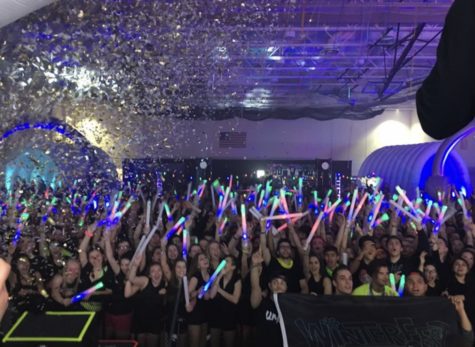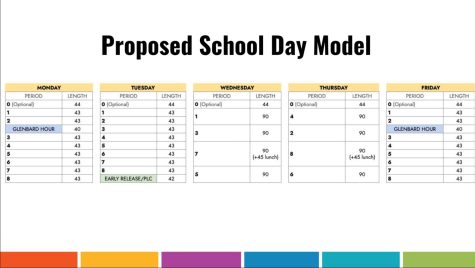Glenbard East Tackles Mental Health
East students are struggling. After a year of abnormality, the demanding weight of social and academic pressures that students were once quite familiar with have returned. For the average stretched-thin student, this shift has been a lot to manage. But, an issue that was once scarcely recognized has recently become a focal point within the school community, and now students are openly able to seek and receive the resources they need to preserve their mental well-being—without speaking in whispers.
This past January, a state law was passed allowing public school students throughout Illinois to take five mental health days per school year. Students are no longer required to provide additional information or a doctor’s note regarding their absence.
The Glenbard East administration “expresses full support for the new bill,” said Alexandria Taylor, Assistant Principal of Student Services, and supports the idea that sometimes students “just need a day to recharge.”
Yahaira Diaz, School Psychologist said that “the more knowledge that is shared around this resource and its benefits, the more I think that students will be able to use it mindfully.”
This bill has come in due time, as many students and staff members at East have expressed concern over the mental health of students, especially in the midst of the persistent COVID-19 pandemic.
“We’re seeing a high trend of mental health support that is needed for students. Students are experiencing trauma at a very intense rate with very little known support,” said Taylor.
Maddie Michelon, junior at East said, “I am a three sport athlete here. Having to manage school and sports, and the emotions that come with them is really stressful. Things like sports are supposed to be fun, but now they’re almost added stressors for me.”
She then further explains some of the feelings she has experienced in her past few years here.
“Anxiety makes you kind of hole-up. I feel like with COVID it was easy– it fed a lot into anxiety, especially after coming back…I know people were trying to not let it affect them, but I feel like we need to accept that it affected everything.”
It’s no secret that the pandemic took a social and emotional toll on students around the globe, which many of our own can attest to, but many fail to understand the unorthodox challenges it also posed to those responsible for providing help.
Ava Blalark, social worker at East, said, “It has always been an issue, but [after Covid] it was declared a national health crisis: there were more percentages of suicide rates, more cases of depression and anxiety, and there are wait lists for hospitals and therapists.”
East has evidently recognized the shift in mental health patterns and awareness that arose from the pandemic and has already taken measures of its own to provide additional support to students who may be struggling.
“This is my fourth year as a social worker at Glenbard East. When I first came, there were three of us…then there were four, and now we have five. They know that students are struggling and that they need the support,” said Blalark.
In addition to new hires, the administration and student services teams are testing new systems to ensure that students know who they can reach out to if they do need help.
“The pandemic has really shifted us to be online more. One way we found really helpful was to put our information–these are your social workers…these are your school psychologists–on the school’s website or schoology,” said Diaz.
Now, students can find wellness tools and resources on “GBE Online Wellness,” a newly launched website that provides a wide variety of help in all forms.
For instance, “Virtual Calming Room, GBE Nurses’ Corner, Resources for Immigrant/Refugee Populations, and Contact and Crisis Information” are just a handful of the hyperlinks students in-need can easily find and probe.
Students can even note support in the loneliest of places, the bathrooms, which are equipped with “Tinkle-times,” a playful yet resourceful graphic intended to help students in distress.
“It has crisis lines and bully hotlines and safety threat assessment lines. Read it and take a picture. You never know when you’re going to have to share it with a friend or even utilize it yourself,” said Taylor.
The increase in support for those dealing with the weight of mental illness is clear-cut, but some argue that we still have some ways to go.
Senior Peyton Dybowski said “We need to have teachers learn to be more understanding. It should be made more natural–it’s not uncommon to struggle.”
This struggle is not a good feeling, but one that so many have experienced. The new strides being taken by the East community are in hopes of a more socially, emotionally, and mentally aware group.
“For me, my stomach gets all knotted, and I get anxious, and then I get mad that I’m anxious or stressed, and sometimes I just can’t get work done,” said Michelon. “It’s hard.”

Marcos Chavez is a senior and this is his second year on Echo! At East, he is a part of the soccer team, Key Club, and Link Crew. In his free time, he...













